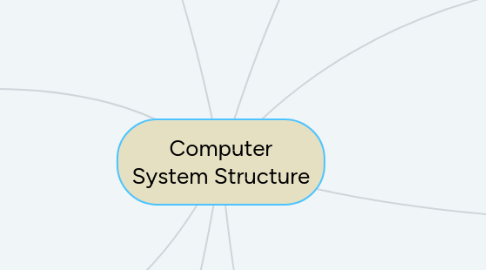
1. Storage Structure
1.1. Main memory
1.1.1. only large storage media
1.2. Secondary Storage
1.2.1. extension of main memory that provide nonvolatile storage capacity
2. Storage Hierarchy
2.1. Storage system
2.1.1. speed
2.1.2. cost
2.1.3. volatility
2.2. Caching
2.2.1. for copying and faster storage
3. Dual Mode Operation
3.1. User Mode
3.1.1. user program executes in user mode.
3.1.2. certain areas of memory are protected from user access,
3.1.3. certain instruction may not be executed
3.2. Kernel Mode
3.2.1. monitor executes in kernel mode.
3.2.2. privileged instructions may be executed.
3.2.3. protected ares of memory may be accessed.
4. Protection
4.1. I/O
4.1.1. user must executes a system call that perform I/O
4.2. Memory
4.2.1. Base register
4.2.1.1. holds the smallest legal physical memory address
4.2.2. Limit register
4.2.2.1. contains the size of the range
4.3. Hardware address
4.3.1. OS allow to load user's program into user's memory, to access and modify parameters of system calls.
4.4. CPU
4.4.1. Load-timer is a privileged instruction
4.4.2. When timer interrupts, control transfers to the operating system.
